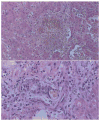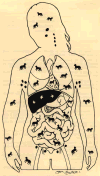The Future of Xenotransplantation
Figures






Similar articles
-
Kidney xenotransplantation: Future clinical reality or science fiction?Nurs Health Sci. 2023 Mar;25(1):161-170. doi: 10.1111/nhs.12994. Epub 2022 Nov 16. Nurs Health Sci. 2023. PMID: 36335558 Free PMC article.
-
Xenotransplantation in China: Past, Present, and Future.Xenotransplantation. 2025 Mar-Apr;32(2):e70038. doi: 10.1111/xen.70038. Xenotransplantation. 2025. PMID: 40243324 Review.
-
Donor pigs for clinical islet xenotransplantation: Review and future directions.Cell Transplant. 2025 Jan-Dec;34:9636897251332532. doi: 10.1177/09636897251332532. Epub 2025 Apr 18. Cell Transplant. 2025. PMID: 40251850 Free PMC article. Review.
-
Ethical Implications of Social Science Research on Xenotransplantation.Xenotransplantation. 2024 Nov-Dec;31(6):e70004. doi: 10.1111/xen.70004. Xenotransplantation. 2024. PMID: 39535478 Review.
-
Current status and future of clinical islet xenotransplantation.J Diabetes. 2016 Jul;8(4):483-93. doi: 10.1111/1753-0407.12395. J Diabetes. 2016. PMID: 26987992 Review.
Cited by
-
Generation of bioartificial hearts using decellularized scaffolds and mixed cells.Biomed Eng Online. 2019 Jun 4;18(1):71. doi: 10.1186/s12938-019-0691-9. Biomed Eng Online. 2019. PMID: 31164131 Free PMC article.
-
Chimerism after Whole Organ Transplant.Guthrie J Donald Guthrie Found Med Res. 1993 Spring;62(2):49-53. Guthrie J Donald Guthrie Found Med Res. 1993. PMID: 21188291 Free PMC article. No abstract available.
-
Cell migration and chimerism after whole-organ transplantation: the basis of graft acceptance.Hepatology. 1993 Jun;17(6):1127-52. Hepatology. 1993. PMID: 8514264 Free PMC article. Review.
References
-
- Groth CG. Landmarks in clinical renal transplantation. Surg Gynecol Obstet. 1972;134:323–328. - PubMed
-
- Jaboulay M. Greffe du reins au pli du conde par soudures arterielles et veineuses (Kidney grafts in the antecubital fossa by arterial and venous anastomosis) Lyon Med. 1906;107:575–577.
-
- Unger E. Nierentransplantation (Kidney transplantation) Wien Klin Wochenschr. 1910;47:573–578.
-
- Hitchcock CR, Kiser JC, Telander RL, Seljoskog EL. Baboon renal grafts. JAMA. 1964;189:934–937. - PubMed
Grants and funding
LinkOut - more resources
Full Text Sources

